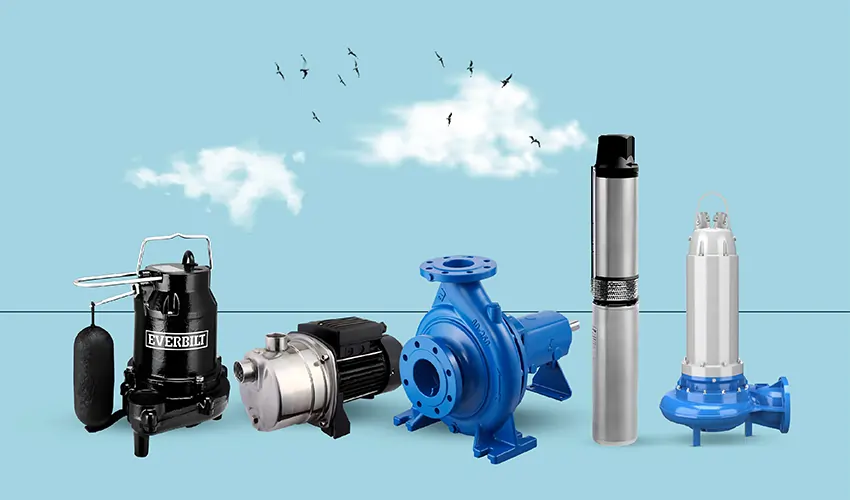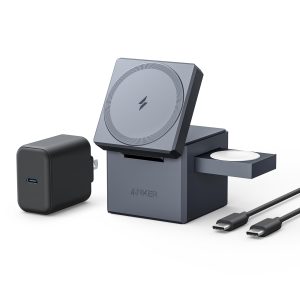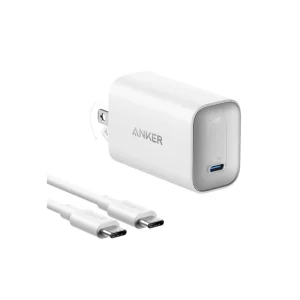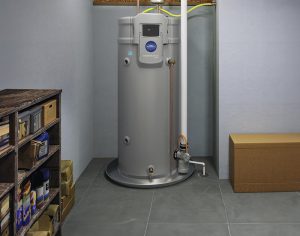Water Pump: What It Does, How It Works, Applications, and Safe Usage Tips

Water pumps are vital devices used in various industries and households to move or transfer water and other liquids from one place to another. Whether it’s for irrigation, drainage, or household water systems, water pumps play an essential role in maintaining the flow of water where it is needed. In this article, we will explore the purpose of water pumps, how they function, their common applications, and how to use them safely.
1. What Is a Water Pump? (Introduction, Common Types, and Uses)
A water pump is a mechanical device used to move water from one location to another. They are designed to either increase the pressure of water in a system or help move water over long distances. Water pumps are crucial for a wide range of applications in both industrial and residential settings.
Common Types of Water Pumps:
- Centrifugal Water Pumps: These are the most common type of water pump used in residential and commercial systems. They use a rotating impeller to push water into the system.
- Submersible Pumps: These pumps are submerged in water and are commonly used for deep wells, ponds, or sewage applications.
- Diaphragm Pumps: Diaphragm pumps use a flexible diaphragm to move water and are ideal for applications requiring low-pressure water transfer.
- Jet Pumps: Jet pumps are commonly used for well water systems. They operate by creating a vacuum to pull water into the pump and then push it through pipes.
- Peristaltic Pumps: These pumps use a rotating mechanism to push water through a flexible tube, making them suitable for applications involving chemicals or food products.
Uses of Water Pumps:
- Water Supply Systems: Water pumps are used in plumbing systems to supply water to homes, businesses, and industries.
- Irrigation: Water pumps are essential in agricultural applications to move water from rivers, lakes, or wells to irrigate crops.
- Drainage: In areas prone to flooding, water pumps are used to remove excess water from basements, yards, or roads.
- Swimming Pools: Pumps are used to circulate water through filters and ensure that the pool stays clean and healthy.
- Sewage Systems: Pumps are used in sewage treatment plants to move wastewater through treatment processes.
2. How Does a Water Pump Work? (Principle of Operation and Key Components)
The operation of a water pump is based on the principle of moving water through mechanical energy. The specific mechanism depends on the type of pump, but the basic operation typically involves the use of force to create pressure that moves the water.
Key Components of a Water Pump:
- Impeller (for Centrifugal Pumps): This is the rotating part of the pump that adds energy to the water. The impeller spins, creating a centrifugal force that pushes the water through the pump and into the system.
- Motor: The motor provides the mechanical energy required to drive the impeller or other moving parts of the pump.
- Pump Housing: The housing contains the impeller or diaphragm and directs water through the pump system.
- Suction and Discharge Ports: The suction port allows water to enter the pump, and the discharge port directs the water out of the pump.
- Seal and Shaft: These components keep the pump’s internal parts from leaking and ensure smooth operation.
How It Works:
- Intake Process: The pump draws water into the system through the intake or suction port. Depending on the type of pump, this can be achieved through vacuum pressure (jet pumps) or by an impeller spinning to create centrifugal force (centrifugal pumps).
- Water Movement: The impeller or diaphragm pushes the water forward through the pump. This movement creates pressure that drives the water out of the pump.
- Discharge Process: The water exits the pump through the discharge port, and depending on the system, is sent to the desired location, such as irrigation fields, a plumbing system, or sewage treatment facility.
3. Where Are Water Pumps Used? (Practical Applications)
Water pumps are used in a variety of industries and for residential purposes, making them versatile tools in managing water flow.
Common Applications:
- Agriculture and Irrigation: Water pumps are essential for transferring water from rivers, lakes, or wells to fields for crop irrigation. They are vital in ensuring that plants receive the necessary water for growth.
- Flood Control and Drainage: In areas that experience heavy rainfall or flooding, water pumps are used to remove excess water from streets, homes, and buildings to prevent damage.
- Domestic Water Supply: Water pumps are commonly used in homes and businesses to supply clean water for drinking, cooking, and other daily needs. This includes well pumps, pressure booster pumps, and sump pumps.
- Industrial Applications: Water pumps are widely used in various industries for cooling, processing, or transferring fluids. For example, they are used in cooling towers for power plants or in manufacturing plants to move liquids between different production stages.
- Swimming Pools and Hot Tubs: Water pumps circulate water through filters in swimming pools and spas to maintain water quality and cleanliness.
- Wastewater Treatment: In sewage systems and wastewater treatment plants, pumps are used to move waste and treat water efficiently.
4. How to Use a Water Pump Safely (Safety Tips and Important Considerations)
Water pumps can be powerful tools, and proper safety measures should be followed to ensure both the pump’s efficiency and the user’s safety.
Safety Tips for Using Water Pumps:
- Read the Manual: Always read the manufacturer’s manual before using a water pump to ensure proper installation and operation.
- Regular Maintenance: Perform routine checks on the pump to ensure there are no blockages, leaks, or mechanical issues. Lubricate moving parts and replace damaged seals as necessary.
- Electric Safety: If the water pump is electrically powered, ensure that it is connected to a grounded electrical outlet and that wiring is properly insulated. Use circuit breakers to prevent electrical overloads.
- Check for Leaks: Inspect the pump regularly for any water or fluid leaks. If the pump has a leak, turn it off immediately and fix the issue before continuing to use it.
- Avoid Dry Running: Many water pumps are not designed to run without water. Running the pump dry can cause overheating and damage the motor or internal components.
- Proper Grounding and Positioning: Ensure that the pump is securely positioned on a flat surface and is properly grounded to prevent accidental tipping or electrical hazards.
- Use Protective Gear: If you are working in hazardous conditions (e.g., wastewater, flooded areas), wear protective gloves, boots, and eye protection to avoid contact with harmful substances.
Additional Considerations:
- Pump Capacity: Choose the right pump for your needs, considering the required flow rate, pressure, and head height. Using an undersized pump can result in poor performance.
- Water Quality: Ensure that the water being pumped is free of debris, large particles, or corrosive substances that could damage the pump.
- Power Supply: For reliable operation, ensure that your water pump is connected to a consistent power source. In the case of larger pumps, a backup power generator might be necessary to prevent interruptions during emergencies.
Conclusion
Water pumps are crucial tools that serve a wide range of applications, from residential water supply to large-scale irrigation and flood control systems. Understanding how water pumps work, their various applications, and how to use them safely ensures that you can effectively and safely harness their power for your needs. By following proper maintenance and safety protocols, you can extend the lifespan of your water pump and avoid costly repairs or accidents.







